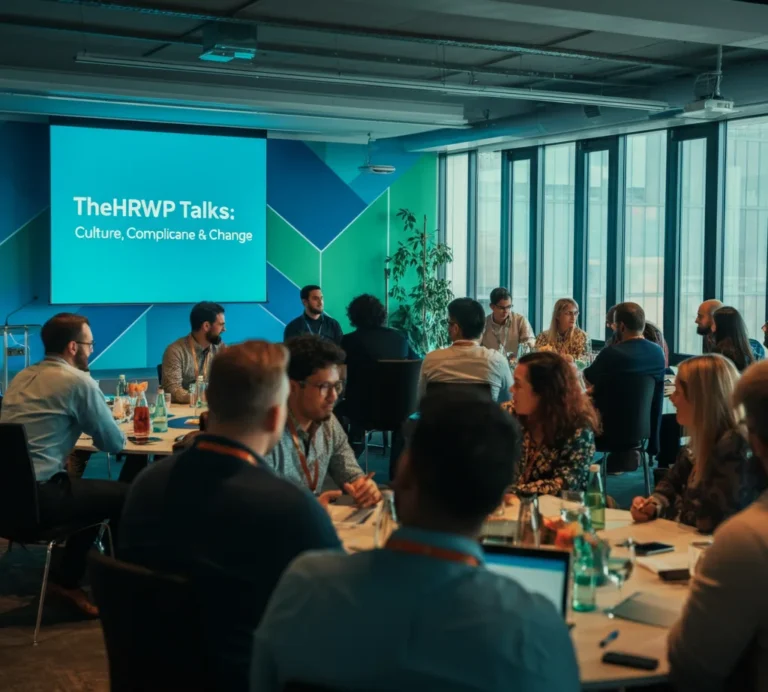
Introduction to TheHRWP Talks
Welcome to TheHRWP Talks, where we dive deep into the heart of workplace dynamics. In today’s fast-paced business environment, understanding the synergy between culture, compliance, and change is more crucial than ever. Organizations are constantly adapting to new challenges and opportunities. But how do they ensure that their workforce remains engaged while meeting legal standards? Join us as we explore these pressing topics with insights from industry experts and real-world case studies. Get ready for an enlightening discussion that could transform your approach to HR practices!
The Importance of Culture in the Workplace
Culture shapes the heart of any organization. It’s not just about perks or office layout; it’s a blend of shared values, beliefs, and behaviors that define how things get done.
A strong workplace culture fosters engagement. Employees feel connected to their roles and motivated to contribute. This connection boosts productivity and drives innovation.
Moreover, culture is crucial for talent retention. When individuals resonate with an organization’s values, they are more likely to stay long-term. High turnover disrupts teams and can be costly.
In today’s diverse environment, inclusivity within company culture is essential. Embracing different perspectives enhances creativity and problem-solving capabilities.
Cultivating a positive culture leads to improved employee satisfaction and overall organizational success.
Maintaining Compliance in HR Practices
Maintaining compliance in HR practices is essential for fostering a healthy workplace. Organizations must navigate various laws and regulations that govern employee rights, benefits, and safety.
HR teams need to stay updated on changes in labor laws. Non-compliance can lead to hefty fines and damage an organization’s reputation. Regular training sessions help ensure employees understand their rights and responsibilities.
Documenting policies and procedures is equally important. Clear communication of company standards helps mitigate misunderstandings. It also provides a reference point during audits or disputes.
Using technology can streamline compliance management as well. Many software solutions offer features for tracking changes in legislation, helping HR professionals remain proactive rather than reactive.
Creating a culture of compliance means integrating it into everyday operations. By prioritizing adherence to legal requirements, companies build trust with their workforce while minimizing risks associated with non-compliance.
Navigating Change in an Evolving Workforce
Change is a constant in today’s workforce. Organizations must adapt to new technologies, shifting demographics, and evolving employee expectations.
Embracing change requires flexibility. Companies should foster an environment where adaptability is valued. This means encouraging open communication about challenges and opportunities.
Training plays a crucial role too. Investing in upskilling employees prepares them for future demands while boosting morale. When team members feel equipped, they are more likely to engage positively with changes.
Moreover, leadership sets the tone for navigating change. Leaders need to model resilience and be transparent during transitions. Keeping everyone informed minimizes anxiety and builds trust within teams.
Gathering feedback throughout the process ensures that adjustments meet employee needs effectively. Listening fosters collaboration and strengthens workplace culture as organizations move forward together in transformation.
Case Studies: Successful Implementation of Culture, Compliance & Change
Case studies provide a window into how organizations effectively navigate the complexities of culture, compliance, and change.
One notable example is a tech company that revamped its onboarding process to align with its core values. By embedding cultural training in their orientation program, they witnessed a significant increase in employee engagement and retention.
Another case involved a healthcare provider that faced regulatory challenges. They established an internal compliance task force that not only ensured adherence to regulations but also fostered a culture of accountability among employees. This proactive approach reduced compliance violations by 30%.
A retail giant transformed its workforce dynamics through regular feedback loops. By encouraging open communication during times of change, it managed to maintain morale while implementing new operational strategies.
These examples illustrate the power of thoughtful integration between culture and compliance amid evolving workplace landscapes.
Q&A with Industry Experts
We had the opportunity to sit down with several industry experts who shared their insights on culture, compliance, and change. Their perspectives shed light on the complexities of navigating today’s workplace.
One expert emphasized the role of leadership in fostering an inclusive culture. They noted that leaders must model behaviors they wish to instill in their teams. Authenticity plays a critical role here.
Another highlighted compliance as not just a legal requirement but as integral to building trust within organizations. When employees feel secure, they are more likely to thrive.
As for change management, adaptability emerged as key. Experts agreed that cultivating resilience among staff can ease transitions during turbulent times.
Their advice resonates deeply across various sectors: stay informed, be proactive and embrace continuous improvement in all HR practices.
Conclusion
TheHRWP Talks brings together vital insights into the complex world of workplace dynamics. Emphasizing culture is essential; it shapes employee engagement and productivity. A strong cultural foundation fosters teamwork, innovation, and loyalty.
Compliance in HR practices cannot be overlooked. Staying updated with laws protects both employees and employers alike. Organizations thrive when they prioritize compliance as part of their core strategy.
As workplaces evolve, so must our approach to change management. Adapting to shifts while maintaining a supportive environment is vital for long-term success.
The case studies presented highlight how organizations have effectively navigated these challenges through thoughtful implementation of culture, compliance, and adaptability strategies. Real-life examples show that success is attainable when these elements are aligned.
Engaging with industry experts provides valuable perspectives on best practices and emerging trends. Their experiences shed light on innovative solutions tailored to current workforce needs.
Embracing the principles discussed in TheHRWP Talks can lead to transformative outcomes for businesses committed to growth and excellence in today’s fast-paced landscape.